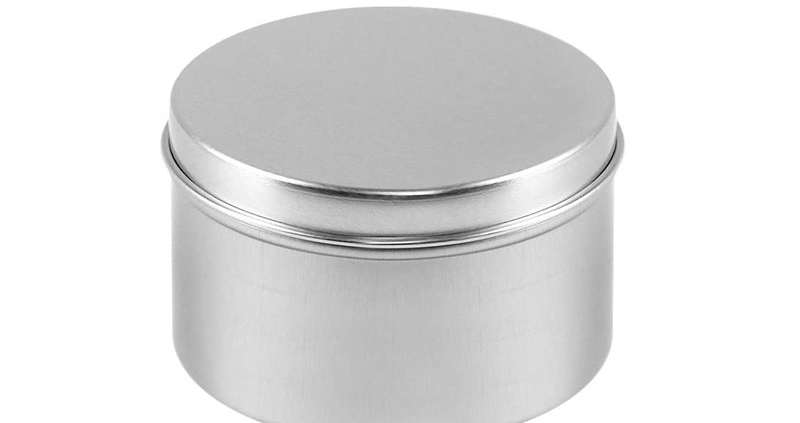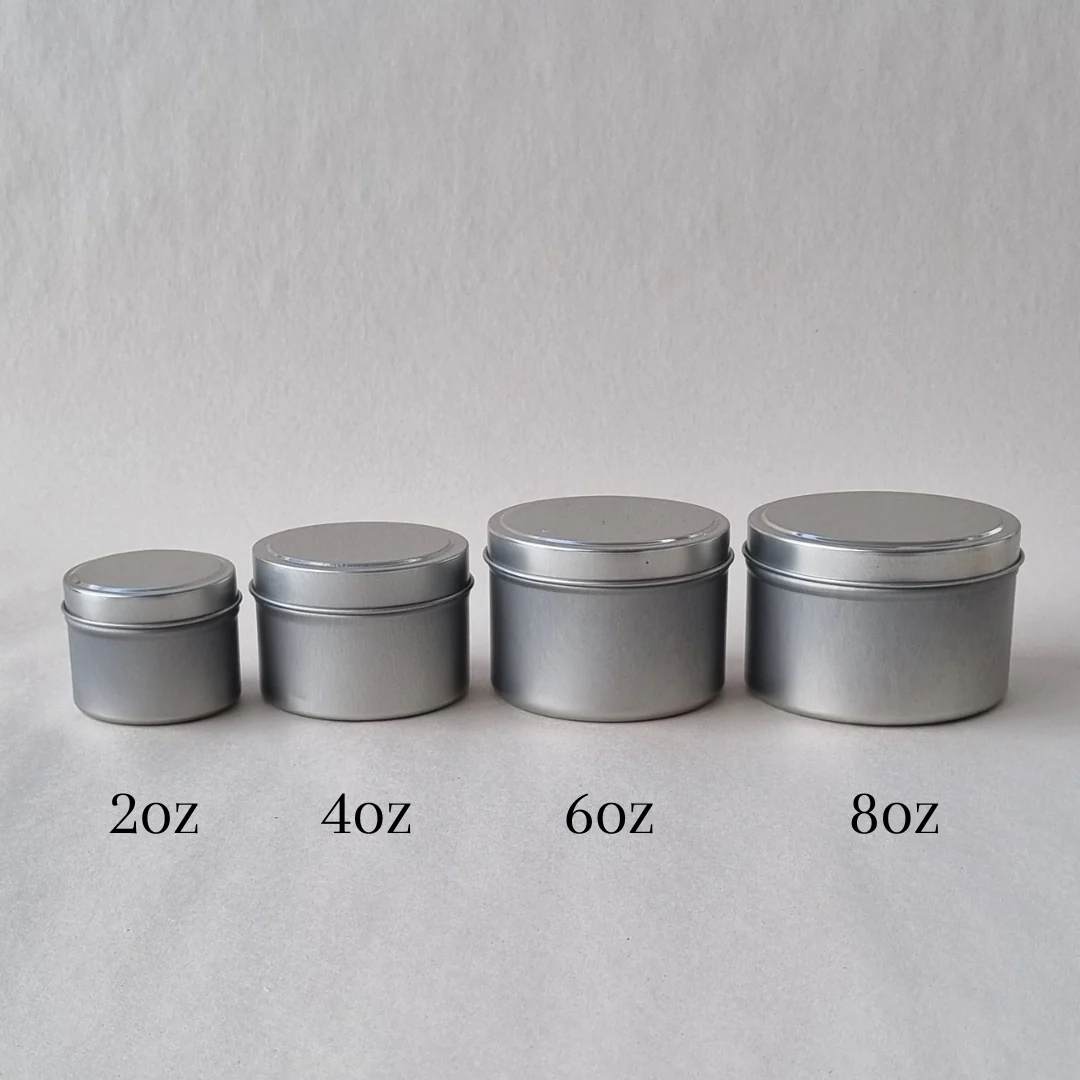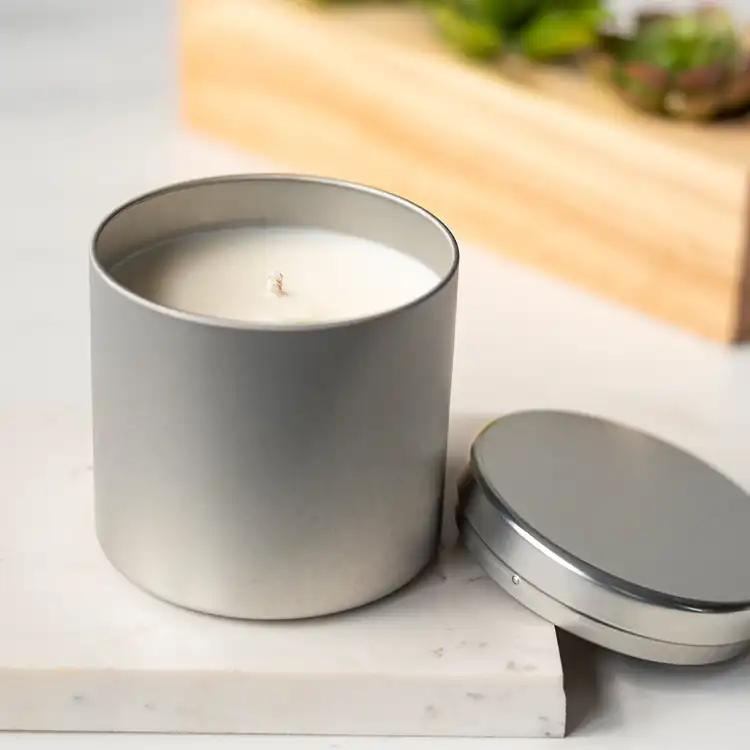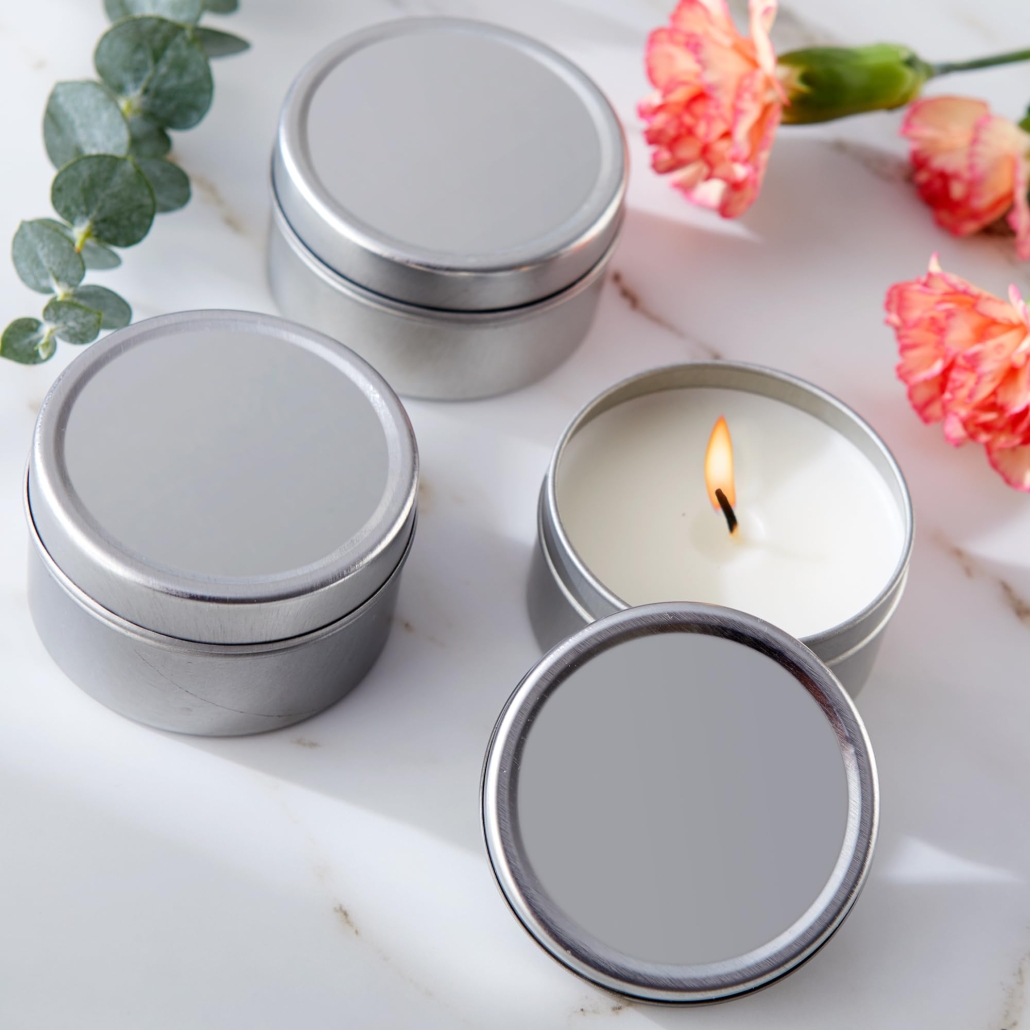How do I choose the right weight for silver candle tins?
Many users of silver candle tins report that the tin’s “weight” affects their perceived candle quality, and they’re willing to pay 15% more for a tin that feels “sturdy.” A boutique soy candle brand we worked with ordered lightweight 0.18mm silver candle tins, but 12% of their tins arrived dented. Another budget brand customer overpaid for 0.25mm jars for a 4-ounce candle. Therefore, the weight of a silver candle tin directly impacts its durability, consumer appeal, and profitability. Choosing the right weight based on your needs takes into account multiple factors, including appearance, practicality, and cost.
The Basics of Different Weights of Silver Candle Tins
First, when discussing silver candle tins, it’s essential to clarify what “weight” means. The key metric, rather than the total weight of the tin itself, is the tinplate thickness—the thickness of the metal used to make the tin. This thickness determines the jar’s strength, flexibility, and cost. At Tisng, we offer three ordinary silver candle tin thicknesses, each suited to different needs:
0.20mm (Light): The most economical option. Ideal for small, lightweight candles (2-4 oz), such as travel or promotional tins, and for brands prioritizing price over frequent reuse.
0.23mm (Medium): The optimal thickness for most manufacturers. It strikes a balance between strength and cost, suitable for candles from 4-12 oz. It’s less susceptible to dents during shipping and feels sturdy and durable in the hand.
0.25mm (Thick): Ideal for luxury or large candles (12-16 oz), gift sets, or brands focused on reuse. This thick jar offers durability and a premium look, making it ideal for high-end boutiques or holiday collections.
“Heavy” silver candle tins don’t mean bulky; they do mean durable. All Tisng metal candle tins are made from food-grade tinplate, so safety and weight are never compromised.
The weight of a silver candle tin aligns with your brand image
The weight of a silver candle tin sends a clear message to buyers, so it must align with your brand’s positioning. Here’s a summary of the brand image associated with different weights:
Luxury brands: Silver candle tins with a thickness of 0.25mm feel substantial in the hand, conveying a sense of “high-end” to buyers. For a brand selling soy candles over $30 in gift sets, this weight justifies the price, and consumers associate the jar’s weight with the candle’s quality.
Budget/Fast-Moving Brands: Thin silver candle tins with a thickness of 0.20mm can hold 10-15 candles. Their affordability and light weight make them suitable for bulk shipping and acceptable for single-use. One customer we worked with used a 0.20mm tin to hold 4oz of paraffin candles and ultimately saved 12% per tin compared to a medium-sized tin.
Mid-Range Brands: Medium-sized silver candle tins with a thickness of 0.23mm are the best choice. They are sturdy enough for retail display without adding unnecessary cost. This is Tisng’s most popular size, used by 65% of our customers, from boutique candle makers to regional brands.
Matching the Candle Type and Tin Size
Practicality is also important—the weight of your candle tins must match the candle’s wax type and size to avoid leaks, deformation, or damage. Here’s how:
Wax Type: Soy wax (denser and heavier) requires a sturdier tin than paraffin wax (lighter). A 12-ounce soy wax candle weighs approximately 340 grams, so a 0.20mm thick tin may warp as the wax melts, while a 0.23mm or 0.25mm tin will remain sturdy. Small paraffin candles can use a 0.20mm tin, but larger tins are best with a 0.23mm tin.
Tin Size: Lighter wax weights are suitable for 2 to 4 ounces and won’t put stress on the metal. Larger tins (10 to 16 ounces) require thicker candles. 16-ounce silver candle tins with a metal thickness of 0.20 mm may dent during wax filling or shipping. Tisng’s testing shows that jars 10 ounces and larger work best with tins 0.23 mm and thicker.
A customer ordered 0.20 mm thick silver tins for 12-ounce soy candles. After the candles cooled, 30% of the tins warped outward, causing the labels to misalign. Switching to 0.23 mm tins resolved the issue.
Durability During Shipping, Handling, and Reuse
Candle manufacturers often overlook the impact of the weight of silver candle tins on durability throughout the supply chain and beyond. Thicker tins offer three key advantages:
Transportability: Silver candle tins 0.23 mm and thicker effectively resist dents caused by rough handling. Tisng’s customers report an 80% reduction in tin damage in bulk shipments after switching from 0.20 mm to 0.23 mm.
Consumer handling: Consumers may drop or knock over jars, so heavier tins (0.25mm) are more durable. One gift set brand using 0.25mm-thick silver candle tins found that 92% of customers reused the jars for storage or decoration, boosting brand loyalty.
Heat resistance: Thicker metal distributes heat more evenly, preventing the tins from overheating. Lighter tins may heat up more quickly, leading to consumer complaints.
How do we recommend the proper weight?
When working with Tisng, we recommend choosing the most appropriate weight. We typically use a four-step process to ensure you’re satisfied. First, we’ll discuss your candle specifications (size, wax type), brand positioning (luxury/budget), and intended use (retail/gift/bulk). Then, once we determine the production order quantity, we’ll ship 3-5 silver candle tins of varying weights (e.g., 0.20mm, 0.23mm) to test their durability, feel, and fit. We’ll also assist you with real-world testing (filling with wax, simulated shipping) to understand the performance of each weight. We’ll then refine and adjust the final weight based on your feedback.
The right candle tin weight is all about consistency.
Choosing the right silver candle tin weight isn’t a matter of “heavier is better”; it depends on the brand, candle size, and goals. For an economical 4-ounce paraffin candle, a 0.20mm weight is sufficient. For a luxurious 16-ounce soy candle gift box, a 0.25mm weight is worth the price. Tisng’s role is to help you find the optimal balance—strike a balance between quality, consumer appeal, and cost.





 Facebook
Facebook Twitter
Twitter Linkedin
Linkedin